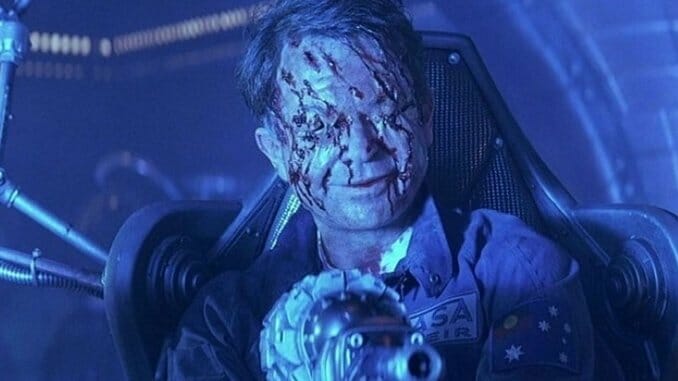ABCs of Horror: “E” Is for Event Horizon (1997)

Paste’s ABCs of Horror 2 is a 26-day project that highlights some of our favorite horror films from each letter of the alphabet. The only criteria: The films chosen can’t have been used in our previous Century of Terror, a 100-day project to choose the best horror film of every year from 1920-2019, nor previous ABCs of Horror entries. With many heavy hitters out of the way, which movies will we choose?
Sometimes, all it takes for a tired concept to be reinvigorated is a change of scenery. Take the classic haunted house movie, for instance. Set it in a crumbling, seaside gothic mansion, and it’s something we’ve all seen a hundred times before. Set your door to hell in an abandoned slab of a starship orbiting Neptune, however, and you’ve got something else entirely. And that something else is Event Horizon.
It’s an odd beast of a film, there’s no doubt about that, and one that has drawn comparison to numerous other properties. At the time of release, reviewers couldn’t help but describe it as “The Shining in space.” It’s also been called a more accurate Doom adaptation than either of the live-action films actually based on the game Doom, or a secret prequel to the grim spacefaring setting presented in Warhammer 40,000. One thing is certain: The chaos captured on screen mirrors the chaotic events that brought Event Horizon to life.
This was a troubled, rushed film shoot, which resulted in a product that wasn’t well received when it hit theaters in 1997. Fresh off the surprise box office smash that was Mortal Kombat, it was meant to be a passion project for director Paul W. S. Anderson, years before he would become exclusively associated with bad videogame adaptations. Studio meddling from Paramount has often been blamed in the years to follow, including a mere four-week period in which Anderson was reportedly forced to assemble his original cut of the film. That cut was then hacked down considerably, taking the runtime from 130 minutes to a brisk 96. Much of what was removed apparently consisted of additional effects and gore shots—impressive, given how many still remain in the film.
It’s a testament to those aspects of Event Horizon that work, then, that the film was even still legible in the state in which it was finally released. It benefits immeasurably from the cold, malevolent presence of its Alien-like starship sets, which feel uniquely inhospitable and pitiless. There’s just something about that derelict spacecraft and the mystery of its massacred crew that is inescapably compelling—it becomes one of those films where the mythology of its story arguably possesses more lasting power than any of the actual events on screen, in much the same way as Ripley and the crew of the Nostromo discovering the downed alien spacecraft on LV-426. Here, Event Horizon wisely chooses not to spell out a ton to the audience, leaving the nature of the ship’s journey outside the known universe largely to one’s own interpretation, which also helps to give these proceedings a certain Lovecraftian flair—that theme of man stepping over the precipice, into a world that is too vast and terrifying to comprehend.